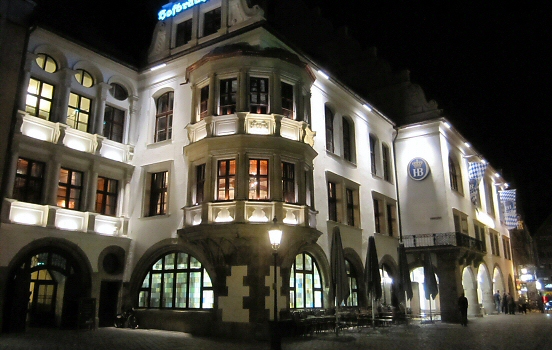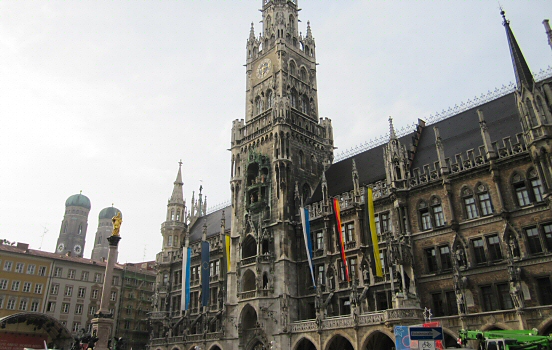The Munich of today is beer gardens, bratwurst and BMWs. A polished Bavarian jewel that sparkles with lederhosen kitsch and Oktoberfest delirium. But peel back the postcard gloss and you’ll find a city that once danced with the devil, and did so with shocking enthusiasm.
This is where it all began. Not just beer and pretzels, but something much darker. A city that midwifed a nightmare. The Hofbräuhaus, now a tourist circus slinging oversized mugs of stale lager, was once a crucible for a movement that would plunge the world into horror. It was here, in the backrooms of beer halls, that a failed Austrian painter whipped up his toxic cocktail of paranoia, hate, and grandiose ambition.
 Darkness falls over Hofbräuhaus.
Darkness falls over Hofbräuhaus.
Situated 10 miles from the city, Dachau was the first concentration camp constructed. The wrought iron gates still carry the mocking words “Arbeit macht frei”. It’s a horrible place but also an important site to remember the atrocities.
But unlike many other cities, Munich doesn’t seem to shy away from the dark steins on its history. The city was mostly leveled during the second World War, and later completely rebuilt while preserving its pre-war street grid. Later this year a new documentation site will open on the site of the so-called Brown House, the former Nazi party headquarters in the city.
 Life goes on in Marienplatz.
Life goes on in Marienplatz.
Munich is clean, efficient and stunning. The beer flows, the sausages sizzle and the tourists snap selfies in Marienplatz. But underneath it all is a hum, a low-frequency reminder of what once was. A city that remembers not out of guilt, but out of obligation. Because forgetting would be unforgivable.
Comments
No comments yet.
Leave a reply